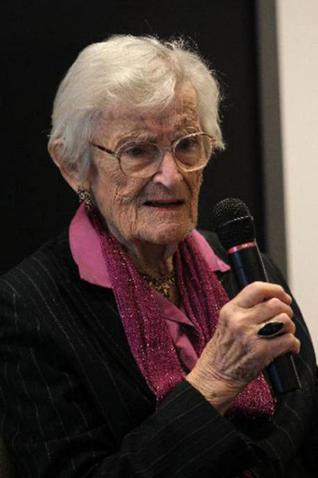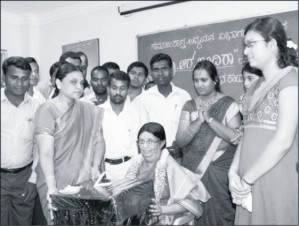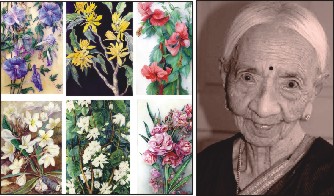by: S Shyam Prasad & Sridhar Vivan
Creation of Telangana and AP has restored geographical supremacy to the state 450 years after the Battle of Talikota. We track the journey of the region from kingdoms to modern-day Karnataka
History was created on Monday with the creation of Telangana, the 29th state in the Indian Union. It marked another change in the contours and boundaries of southern India and although Karnataka had very little to do with the bifurcation of Andhra Pradesh, the creation of Telangana changed the history of Karnataka — ever so slightly.
Karnataka officially became the biggest of the South Indian states in terms of geographical area (the seventh biggest in the country). With an area of 1,91,791 sq km, Karnataka leads the ‘pack’ in the South, followed by what now remains of Andhra Pradesh (popularly called the Seemandhra region) with 1,60,205 sq km of area.
Being the biggest state in terms of area would have been a great advantage in the age of kingdoms, but no longer. Karnataka may gain very little — indeed nothing — from being the ‘biggest’. Political representation in Parliament is based on the population which means Tamil Nadu will continue to have a bigger say with its 39 MPs. Andhra Pradesh will have a diminished voice as its 42 seats would now be whittled down to 25.
But the ‘biggest’ tag does reflect (historically at least) a sort of pre-eminence. From the beginning of the sixth century, empires founded in Karnataka ruled over much of present day Karnataka, Andhra Pradesh and Maharashtra. These included the Badami Chalukyas, Rashtrakutas, Kalyani Chalukyas, Hoysalas and the Vijayanagara Empire.
According to eminent historian S Shettar, the most enduring (in terms of time) dynasties of Karnataka were the Gangas and the Kadambas. But they ruled small principalities. “The biggest imperial house was that of the Rashtrakutas,” said Shettar. “They were the most influential rulers in India of anytime. Samudra Gupta is just highlighted due to North Indian bias. The Kailasanatha temple, in Maharashtra, alone is testimony to their eminence. Their battles reached the Himalayas and Bengal.”
Karnataka-based empires stayed the biggest in the South until the collapse of the Vijayanagar Empire 450 years ago when the hegemony ended. “The Vijayanagara Empire was different in many ways,” said Shettar. “For the first time people speaking Kannada, Telugu, Tamil, Oriya and Marathi were one empire.”
This year marks the 450th anniversary of the Battle of Talikota (also known as Battle of Rakkasa-Tangadi) which put an end to more than 1,000 years of Karnataka’s pre-eminence in politics of south India and the Deccan.
The political pre-eminence led to some of the most famous medieval cities, centres of trade and temples in India. The most famous of these was the Vijayanagara capital — now Hampi — which is said to have taken six months to destroy. Following the battle in 1565, the Vijayanagara Empire continued to exist nominally for nearly a century. Scores of Vijayanagara feudal lords began ruling over petty kingdoms. Kannada-speaking areas were never united again until 1956.
“The 1565 battle was a colossal loss,” said Shettar. “Like the French will never celebrate the Battle of Waterloo, similarly the Battle of Talikota cannot be celebrated. But there is much to learn from defeats. Now some intellectuals and politicians from the Hyderabad-Karnataka region are demanding a separate state. It is because of the belief that there is neglect and also to some extent jealousy. This is similar to the demand for Telangana. But we have to learn from that battle (1565) and stay united.”
Ironically, says Shettar, the fight for linguistic states began in Andhra Pradesh because they felt dominated by the Tamils of Madras Presidency. “In south India, the opposition to linguistic states was confined only to a small extent from the Tamils because they feared losing territory. But slowly there are feelings that linguistic identity is not giving the requisite economical benefits. People of Karnataka are more or less emotionally reconciled to a linguistic state now.”
MOST BORDERS IN SOUTH
With the creation of Telangana, Karnataka now shares its borders with six states —Maharashtra, Goa, Kerala, Tamil Nadu, Andhra Pradesh and Telangana. The state administration has to get in touch with the Telangana as well as the residual Andhra Pradesh for inter- state issues. Apart from river water sharing — for example, Karnataka needs to deal with Andhra Pradesh for Tungabhadra and Telangana for Krishna —and other border issues, the transport body also has to have new agreement on travel.
‘KARNATAKA’ IN HISTORY
* Sanskrit texts: Shudraka’s Mruchhakatika, Varaha Mihira’s Bruhat Samhite, Somadeva’s Katha Saritha Sagara refer to Karnata
* 455 CE: Kadamba king Shantivarma called, “The master of the entire Karnataka region”
* 7th Century CE: Feudatories Rashtrakutas refer to Chalukyan Army as ‘Karnataka Bala.’
* 850 CE: Amoghavarsha’s Kavirajamarga calls land between Kaveri and Godavari as ‘Karnata.’
* 10th Century CE: Rajashekara’s Kavyamimase: Karnataka
* 14-16 Centuries: Vijayanagara Empire referred to as Karnata Empire by its people.
* After Talikota battle the first of the Aravidu dynasty ruler Tirumala Deva Raya called ‘reviver of the Karnata Empire’ in the Telugu work Vasucharitamu.
THE BATTLE OF 1565
The first skirmishes of the Battle of Talikota started on December 29, 1564. It was on January 26, 1565 that a full-scale historic battle took place at Rakkasa- Tangadi villages — near what is Bijapur district today. The five Deccan sultanates of Ahmadnagar, Berar, Bidar, Bijapur and Golkonda defeated the Vijayanagara army, a defeat that resulted in the dramatic capitulation of the Vijayanagara Empire. For more than 1,000 years prior to that battle, Karnataka as we now know it was part of empires such as Badami Chalukyas, Rashtrakutas, Kalyani Chalukyas and later the Hoysalas. These were the largest empires in South India. The loss in 1565 was so severe that Karnataka was to have a united rule again only in 1956. In between, large swathes of Karnataka were briefly united under Hyder Ali. By the time Karnataka was unified post-Independence, the region was under 20 different administrations ranging from the Wodeyars to the British and a host of small principalities.
source: http://www.bangaloremirror.com / Bangalore Mirror / Home> Bangalore> Cover Story / S Shyam Prasad & Sridhar Vivan / Bangalore Mirror Bureau / June 03rd, 2014






